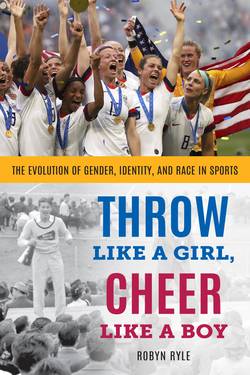Читать книгу Throw Like a Girl, Cheer Like a Boy - Robyn Ryle - Страница 22
На сайте Литреса книга снята с продажи.
Being Intersex in Sports
ОглавлениеThe further we delve into the history of gender testing in sports, the more confusing it seems to get. That’s because human biology is much more complicated than the simple categories of male and female imply. Chromosomal tests are problematic because our genetic makeup is more complex than the simple XX and XY that many of us presume to categorize us. Turner syndrome, Klinefelter syndrome, and AIS are some of the many conditions that fall under the umbrella term intersex. An intersex person is born with genitalia, chromosomes, internal anatomy, hormones, or some combination of the above that are outside the typical male/female binary. When all the different types of intersex variations are combined, it is estimated that as many as one or two in two thousand people are intersex, and these numbers may be higher among elite athletes. Some intersex variations are discovered at birth, but as the gender testing in elite sports reveals, many go undetected. Many intersex infants are altered at birth by doctors who argue that this saves these children the social and psychological distress of gender ambiguity. Intersex activists advocate for no surgery until children have reached an age to make their own decisions about their gender and their bodies. Being intersex is a naturally occurring phenomenon. Doctors often treat being intersex as a condition to be corrected, but in reality, it’s a simply a reflection of the natural biological diversity that exists around gender. Given that diversity, devising any biological criteria to definitively say who is and isn’t a woman is impossible.
